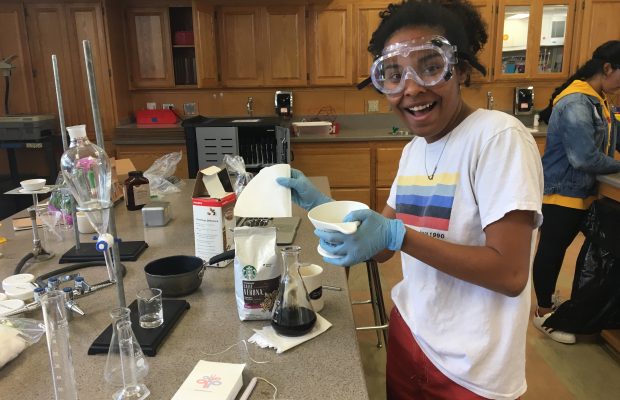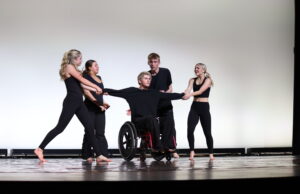Students get busy in the lab

Over the course of the next couple of weeks, students in Mrs. Dogancay’s IB Chemistry higher level class will be conducting their annual internal assessment experiments. The internal assessment includes approximately ten hours in the laboratory and further time at home where students process and interpret the data they collect. These experiments are individually run, giving students their first opportunity to tackle their scientific interests of their own.
Audrey Washington, senior, decided to investigate methods of coffee preparation that yield the most caffeine. “I wanted to conduct this experiment because I love coffee and I often utilize it to stay up late,” said Washington, “This is significant because it’s helpful to my own lifestyle, as it will allow me to use the brewing method most subtle to my sleep schedule, if I wish to stay up later or just have coffee.”
Another student, Suha Hussain, senior, chose to do her chemistry internal assessment on the reaction between bleach and food coloring. “I’m observing the effects of the concentration of food coloring on the overall reaction rate,” Hussain said. “The cool thing is that I get to use a Vernier spectrometer that measures absorbance values over time, as reaction results in a colorless product.”
Another IB chemistry student, Peter Cismaru, senior, encountered some difficulty at first with his experiment. “Originally I was going to synthesize calcium channel blockers (a type of pharmaceutical compound), however, I was required to change my topic due to safety and equipment concerns.”
Needing to Take a different path, Cismaru instead decided to look at looking at voltaic cells and electrochemistry. “I’m determining the effect of a copper sulfate solution on the voltage created in a copper and zinc half cell,” said Cismaru. “I chose this topic instead because I find electrochemistry very interesting and it was a very safe reaction that did not require complex equipment.”
The clock ticks slowly as these students get to work on their largest project for the year. From caffeine to food coloring to voltaic cells, students are building something new and investigating unfamiliar territory, thereby expanding their horizons.

